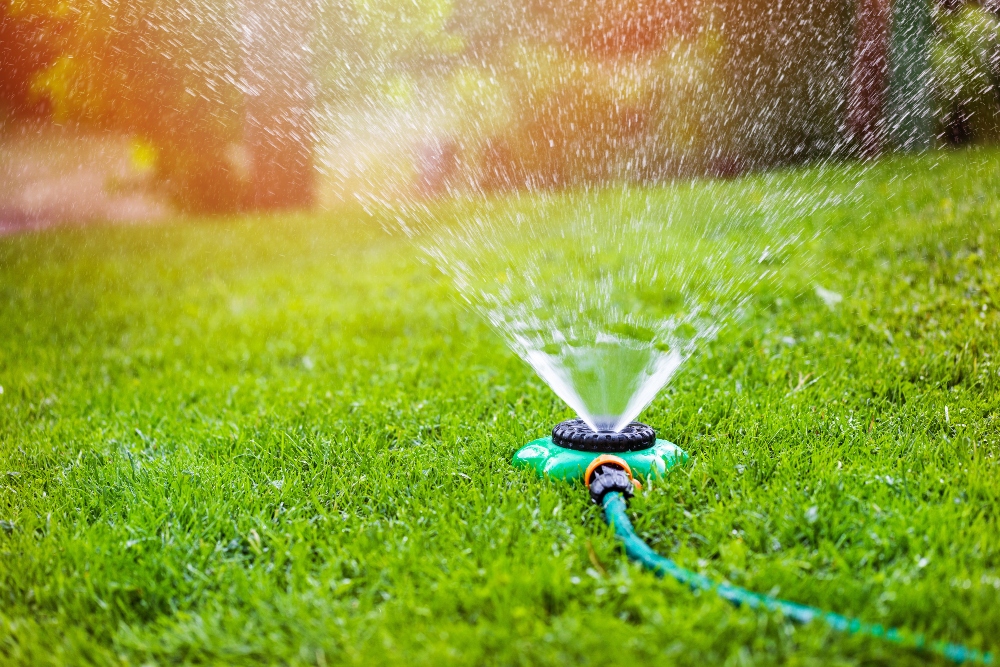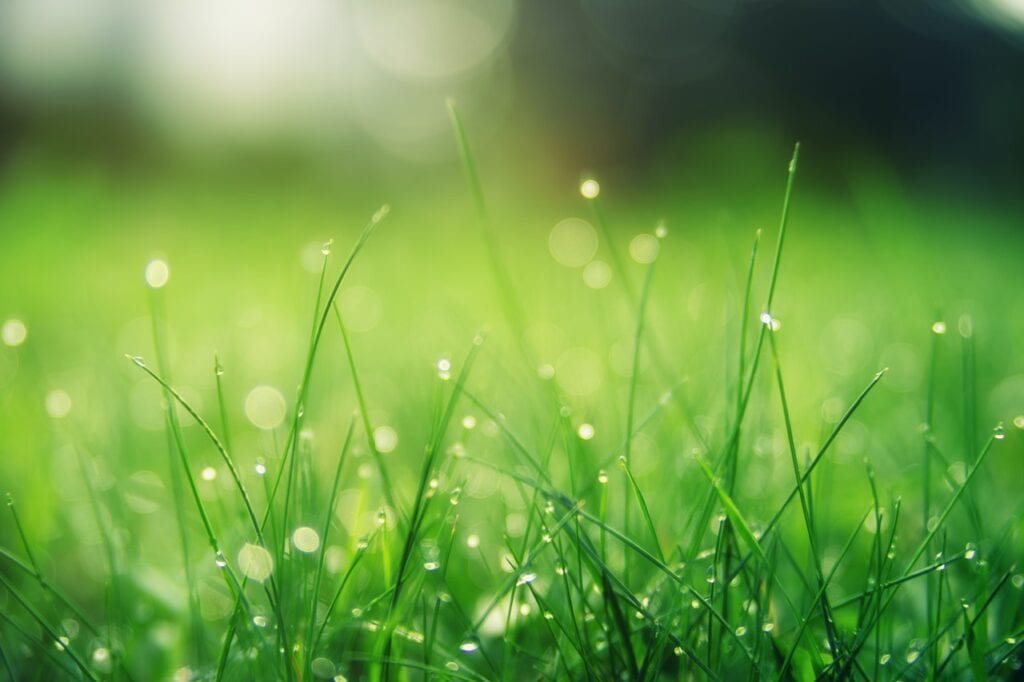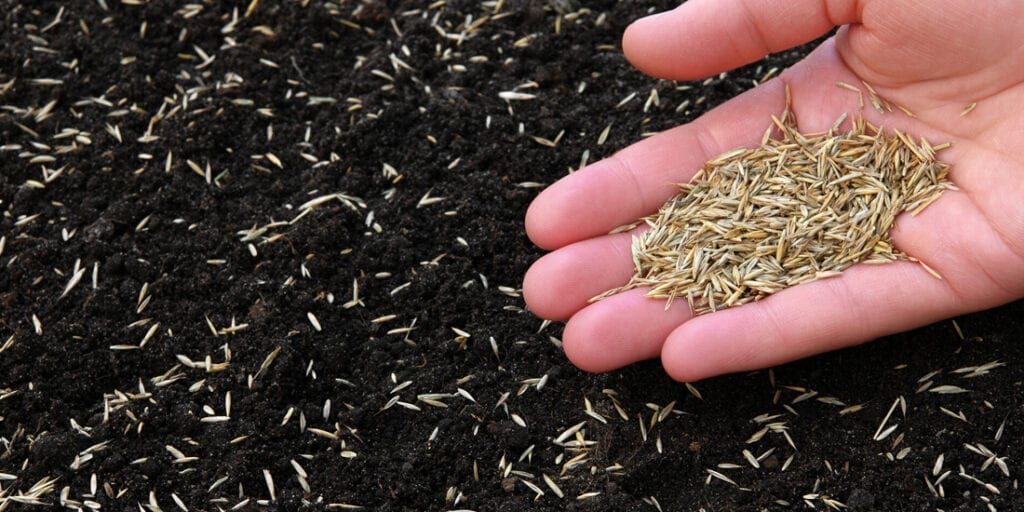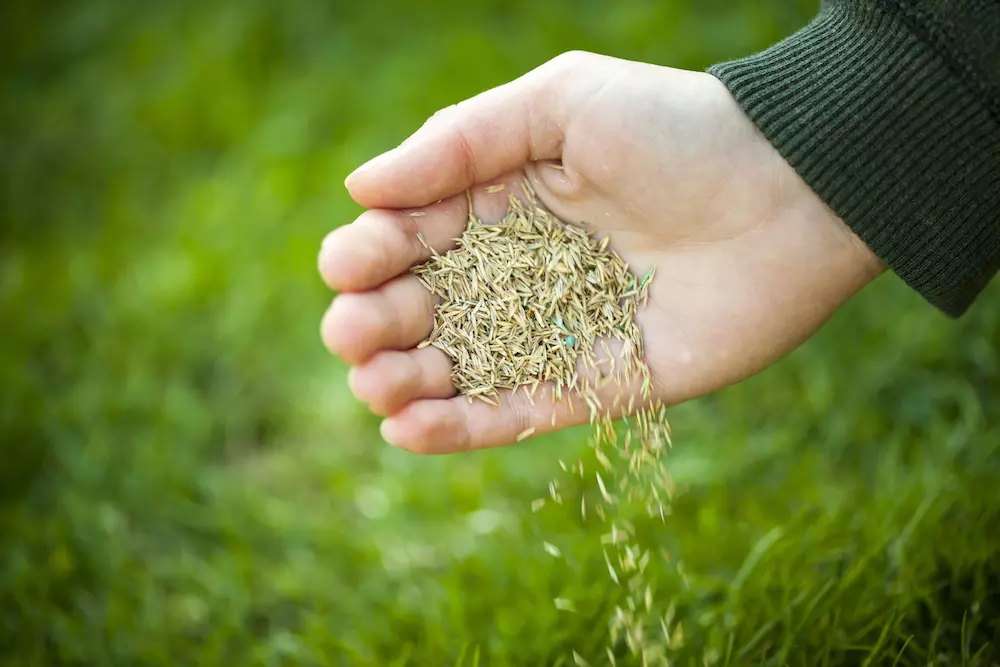Is it OK to Put Grass Seed Down Before it Rains?

If you’re looking to beautify and rejuvenate your lawn this spring by covering it with grass, you’re probably riddled with questions. One of the most important dilemmas you can have is whether to put the seed down before or after it rains.
The internet is full of contradicting statements: some are saying putting the seed before a heavy rain will cause it to wash off, and others say there’s no better time to plant the seed than before it rains. So which one is the truth? How much rain is too much? Is there such a thing as the perfect time for putting grass seeds down?
In this short guide, we’ll answer all of these questions and more, so keep on reading if you want to find out!
Grass needs water to thrive

You can’t expect grass seeds to germinate in the middle of a desert. They need water to grow and survive, and most species need a lot of it. Once you seed your lawn, you’ll need to water it at least twice a day! So, rain can be extremely helpful, as it will do the job of watering your lawn for you.
Planting your grass seeds during dry weather conditions is never a good idea. While sunlight is crucial to plant growth, too much of it without the necessary moisture is bad news.
So, yes, putting the grass seeds before it rains can save you a lot of time and effort.
Different grass species need different levels of moisture
Before you purchase the grass seeds, make sure to do your research on the species. Some natural turfs simply require more water than the others do. Contrary to popular belief, overwatering your grass seeds is a possibility, so make sure to look for native turfs that are susceptible to your local weather.
Of course, you don’t need rain to grow the grass, as you can water your lawn with a simple hose, but it sure can make things much easier.
Overall, we recommend you choose the species that are local to your area, so you’ll ensure it can withstand the weather and soil conditions.
How much rain is too much?

There’s a difference between expecting a few cloudy and rainy days and expecting a full-blown rainstorm. Your seeds can get overwatered and washed away if there’s too much water coming their way.
So, while seeding your lawn before it rains is perfectly fine, the same can’t be said if there’s a storm incoming. We recommend planting the grass only once the rainfalls are mild.
Of course, we can’t predict exactly how heavy the rain will be. Still, there’s a way to prevent your seeds from being washed away if something unexpected happens. Before anything else, make sure you’ve prepared your soil properly. This includes removing any large stones, debris, and roots, and ensure your seeds are properly covered.
How to deal with erosion?
If some of your grass seeds still end up being washed away, your turf might come out in uneven patches of grass. While it may be a bit disappointing, it’s not the end of the world. Grass does grow quickly (you’ll notice this when you start mowing your lawn), so all you need to do is plant some more seeds. After some has passed, your lawn will even itself out naturally.
Of course, this is not quite cost-efficient, as you’ll need to invest in more seeds and put in some more effort. Still, as weather can be unpredictable, it could happen to anyone, and it’s easily repairable.
Sowing the grass after it rains

While your soil should be damp and moist before you start planting any seeds, heavy rain could make it impossible to do so. Yes, sowing it before it rains puts it at the risk of erosion, but doing so after your entire lawn is soaked is a messy job. You’ll have to deal with a lot of mud, and walking on the soaked soil can ruin its compactness.
According to A View Turf, all lawn-work should be avoided after a particularly rainy day. That includes mowing your turf too! Instead, do your lawn maintenance when it’s sunny outside.
Rain and watering
If you’re expecting a lot of rain in the next period, then it goes without saying it will directly impact the need for watering. Of course, you should consider the rates of transpiration too.
As we mentioned before, water isn’t the only factor that impacts the growth of your grass. You have to consider the amount of sunlight, the outside temperatures, and the type of soil you have. If the temperatures are extremely high and you get a quick rain shower, you’ll still have to water your lawn after it’s done. Also, your soil may be unable to hold water for long enough if it’s too sandy. Hydrophobic soil can be a huge issue, so we advise you to get it checked before trying to plant the grass.
Ideal sowing times

The best time to pick up on a lawn project is during the fall or spring when the weather is nice and mild. As we mentioned before, planting the grass seeds before a heavy storm or during a draught isn’t a good idea at all. You’ll need both sunlight and moisture to achieve the best results.
If this sounds too complicated to you, you can always hire a professional lawn service. We suggest you go with the natural turf for the best durability and visuals.
Overall, the ideal time for sowing your lawn is whenever the weather is warm and humid, which usually happens in the early fall and spring.
The final verdict
Putting your grass seeds down after a rain is perfectly OK, if not the recommended practice. Of course, you’ll still be exposed to the risk of erosion, so be mindful when planting the seeds. Do your research and learn the best ways to prepare your soil for sowing.
As long as you take good care of your lawn and your soil, you’ll be able to achieve the perfect results!




